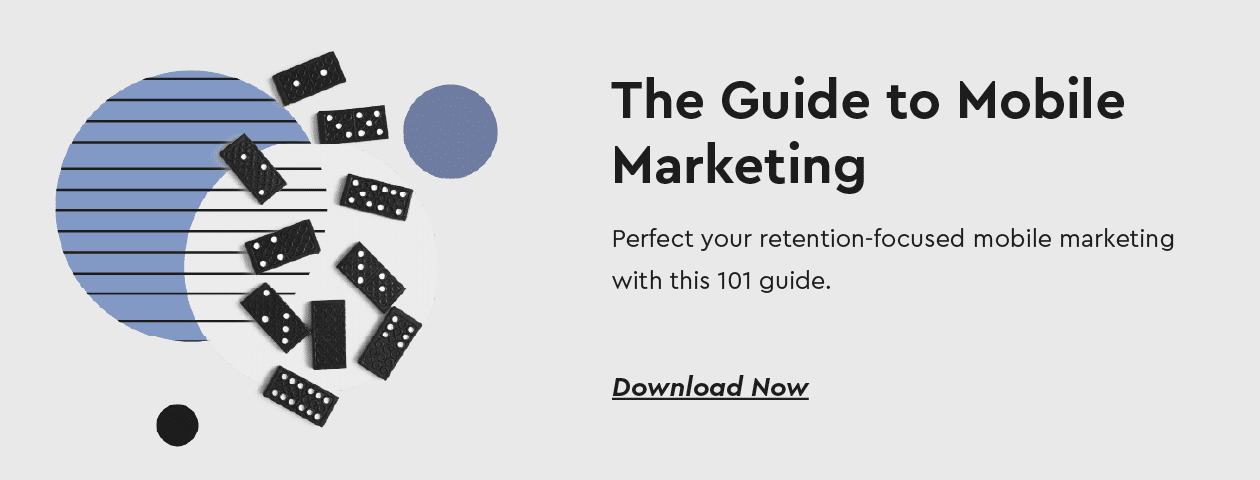What is Realtime Customer Marketing?
Realtime customer marketing is the delivery of highly personalized customer marketing messages to individual customers, at the moment of greatest relevance. When effectively executed, realtime marketing improves the customer experience and generates more revenue for the company, among other benefits.
Unlike pre-scheduled, “batch” customer campaigns, a realtime campaign is triggered when specific customers perform a particular action or series of actions. A common customer marketing challenge is to match the most relevant message/offer to each customer (or small group of customers) based on the customer’s specific purchase history, campaign response history, customer lifecycle stage, predicted future value, risk of churn and many other factors. Likewise, the message should be a very relevant response to the specific action(s) which triggered it.
The power of personalized, realtime messaging is enormous. Instead of focusing marketing efforts only on “getting the customer into the store,” the customer is already “in the store” and the marketer has a very good idea of what the customer wants (or needs or would appreciate) at that exact moment in time. Of course, this level of personalization requires an intensely data-driven approach, so that each customer receives the most relevant and enticing offer possible.
Take, for example, a repeat customer of an online sporting goods store. This customer often buys ski equipment (this is the specific customer) who returned to the site after a previous visit during which no purchase was made (this is the specific behavior pattern). In such a scenario, the marketer may show the customer a pop-up message offering a discount on a complementary ski product or free shipping, to encourage the customer to make purchase during the current visit.
Another example might be a top-tier player in an online game who just experienced a big loss. Attempting to ensure that the player doesn’t quit entirely, the marketer can send the player a realtime, personalized message offering him bonus credits if he continues to play. Relieved and pleased, the player will likely continue to play.
Download Now: All you need to know about mobile marketing
The Benefits of Realtime Customer Marketing
When realtime customer marketing is done well, it captures attention, drives action and improves the customer experience, leading to benefits for both the brand and the customer. The brand enjoys increased response rates, revenues, marketing ROI, and customer engagement, loyalty and retention. Any time a brand can communicate with customers in a more personal and relevant (and less corporate) manner, overall brand perception increases dramatically.
Meanwhile, customers experience a more satisfying relationship as a result of greater messaging relevance and the feeling that the company understands them. Given the intense competition in every online sector today, and the fact that customers expect brands to exhibit emotional intelligence in their communications, it is now practically required that companies engage with customers how, when and where it makes the most sense for each one.
Want to learn how to leverage realtime data to maximize revenue? Watch the 3-minute video or read the transcript here.
The Best Channels for Realtime Customer Marketing
Not every available messaging channel is ideal for realtime customer marketing. Those channels that will be seen by the customer immediately – or, at least, within minutes – are most likely to succeed.
On-site and in-app messaging are usually considered the most effective channels – at the exact moment that a user’s actions trigger a campaign, the campaign appears before his or her eyes. However, this approach is obviously only useful in scenarios that the user is currently interacting with a website or app.
Channels such as email, SMS, push notification and social media can be effective in many situations, both in response to user activity in a site or app, or otherwise. For example, if a user abandons his or her shopping cart on an e-commerce site, receiving a message a few minutes later is often enough to get the customer back to the site. In other scenarios, where the user’s actions are not performed in the context of a site or app, these might be the only options available. For example, when location-based technology indicates that a customer entered a particular physical store (or nearby area), an offer could be delivered to their mobile phone to encourage them to buy a particular product (or enter the store).
For very-high-value customers in certain situations, companies may activate their call center to contact the customer by phone or online chat. For example, if a VIP customer of an online jewelry store just spent 15 minutes browsing two similar products on the site, but didn’t add either one to the shopping cart, a rep could call the customer to provide more information and try encourage the customer to purchase one of those items.

Realtime Campaign Performance Feedback and Optimization
A valuable aspect of realtime customer marketing for businesses is the speed at which campaign performance can be analyzed and optimized. Whereas standard campaigns take time to measure (e.g., it may take days for the results of an email or display ad campaign to come in), the effectiveness of realtime campaigns can usually be measured in minutes: either the customers are taking the desired actions or they aren’t.
By paying attention to the response rates of customers to the personalized realtime messaging they are receiving, campaigns can be improved on the fly, even a few times per day. The marketer can quickly tweak variables such as the customers targeted, the actions which trigger the campaign, the visuals of the message and the offer itself. When a realtime campaign is under-performing, even after tweaking it, it can quickly be dropped and alternatives run instead.
This framework encourages marketers to experiment, and to explore ideas via trial and error that might otherwise never be practical to implement. In many cases, marketers are able to quickly gain new insights into customer behavior that can light up new ideas and uncover untapped opportunities.
The Guide to Mobile Marketing
Perfect your retention-focused mobile marketing with this 101 guide.
The Challenge of Realizing Realtime Customer Marketing
Achieving realtime customer marketing requires a number of key technical abilities, including a single customer view, predictive customer modeling, dynamic customer targeting, realtime customer activity tracking and trigger detection, automated multi-channel message delivery, and campaign evaluation and optimization.
- Single customer view – A repository containing all available data about every customer, always ready for analysis and targeting
- Predictive customer modeling – Software that continuously analyzes customer behavior to determine what each customer will likely want or do next
- Dynamic customer targeting – A facility for marketers to leverage the single customer view and predictive model to select the specific customers who will be eligible to receive each realtime campaign
- Realtime customer activity tracking and trigger detection – Realtime collection of data about relevant customer activity, as it happens, along with an analysis engine to calculate when pre-defined triggers occur
- Automated multi-channel message delivery – The offer/incentive along with the mechanism to immediately serve it (e.g., website pop-up, SMS, mobile push notification, email)
- Campaign evaluation and optimization – A system to calculate the actual monetary uplift of each customer-trigger-message-channel combination (requires the use of test and control groups so that the actual uplift of the realtime campaign can be accurately evaluated) and optimization techniques and machine-learning recommendations for campaign improvement
A few years ago, assembling these kinds of technologies into a successful and easy-to-use system would have been prohibitive, if not impossible. Today, however, realtime customer marketing has become the norm at thousands of customer-centric companies around the world.
While each of these elements can be developed separately and then integrated by a company’s IT department, obtaining a dedicated system already incorporating all these capabilities is an easier, faster and more likely-to-succeed approach.
Watch a couple of realtime campaign examples that you can include in your registered only marketing plan to increase overall conversion rates. Watch the video below or read the transcript here.
Frequently Asked Questions
Does Optimove manage real-time customer messaging?
Absolutely! Optimove fully supports real-time delivery of relevant marketing actions to specific customers segments, based on particular customer actions or situations (“triggers”). The Holy Grail of personalized marketing is the ability to deliver highly segmented, behavior-triggered customer interactions at the exact moment they’re most effective. By combining specialized marketing treatments based on customer actions and the deep behavior-based segmentation provided by Optimove, marketers can expect to have far greater influence on consumer activity and spending patterns. Optimove provides a complete, end-to-end system for hyper-targeted, realtime customer marketing:
- Powerful customer segmentation determines who is eligible for a particular realtime message
- A system to define and instantly detect any combination of website/app customer activities that will trigger a message
- The ability to deliver the message via multiple channels, such as Web/app pop-up, email and push notification
- Accurate financial uplift measurement along with tools to systematically improve the effectiveness of every interaction”
How to track real-time customer responses in email campaigns
There are three different metrics you will want to track.
- Customer opens of emails – this is the tracking of customers who opened your emails. Note that since iOS 15, tracking open rates reported by Email Service Providers (ESP) are no longer accurate. However, for some directionality, there are brands that still use it.
- Customer clicks on emails – this is the tracking of customers who clicked a link on your email. can be tracked by using a tracking pixel provided by your ESP.
- Customer Response Rate – this is the percentage of customers who performed the desired action. For example, what percentage of those who received the email went on and purchased the item being marketed.
- Email Uplift – this is the incremental impact of your real-time email. To track this you will need to use control groups in your email campaigns.

Get Started with Realtime Customer Marketing
Optimove is a Relationship Marketing Hub that combines the most advanced customer modeling and predictive analytics technologies, along with an automated customer marketing orchestration platform that supports both pre-scheduled and realtime campaigns. The software helps marketers implement a systematic approach to planning, executing, measuring and optimizing a complete, highly personalized customer marketing plan.
Request a Web demo to learn how you can use Optimove to automate a complete system of highly personalized customer marketing activities that increase long-term customer loyalty and lifetime value.
Get a personalized tour of Optimove
Let us show you how to go from tens to hundreds of segments

